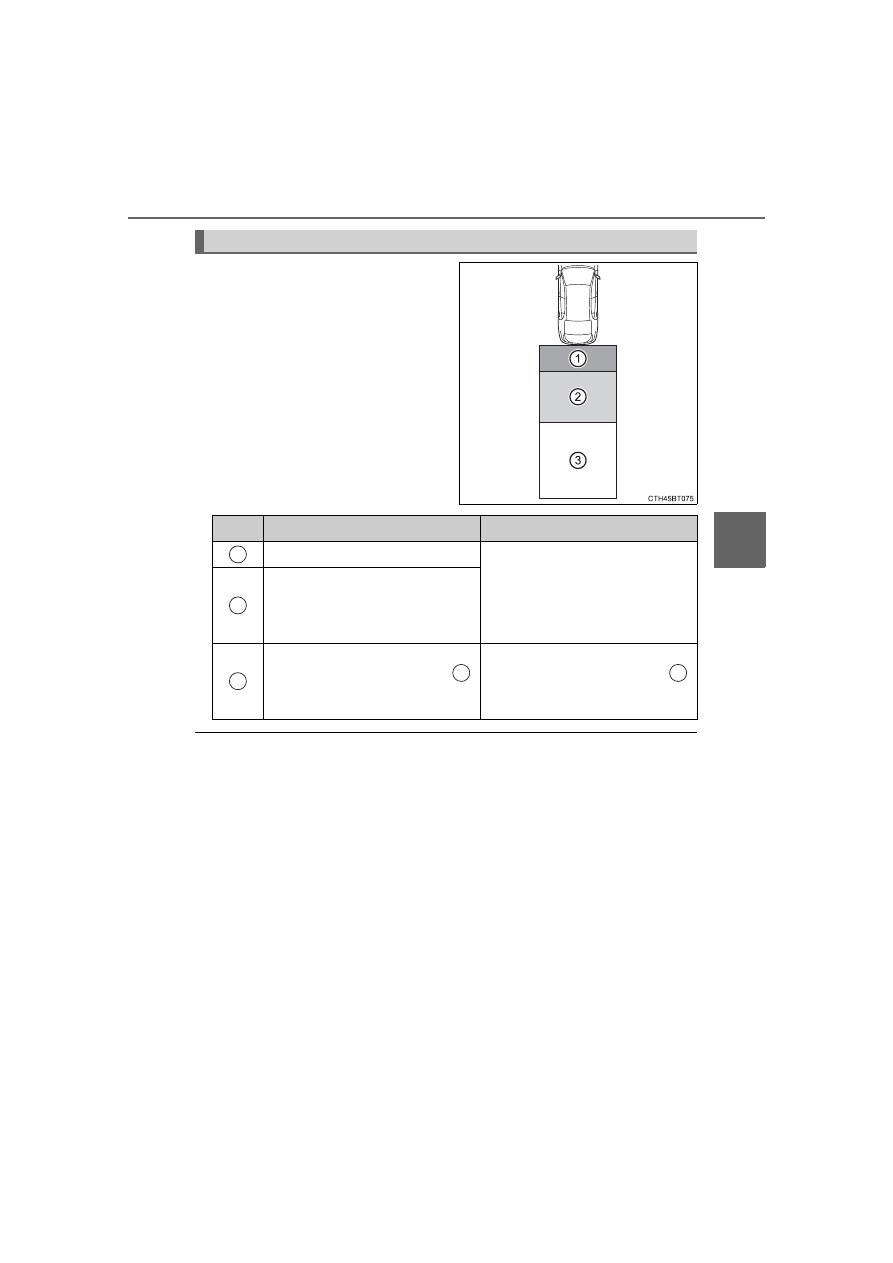Toyota Camry (2019 year). Manual - part 21

321
4-5. Using the driving support systems
4
Drivin
g
CAMRY_U
If the rear camera detection func-
tion detects a pedestrian in the
detection area, the buzzer and
icon will operate as shown in the
following table:
■
The rear camera detection function is operational when
The rear camera detection function is operational when the following condi-
tions are met:
●
The engine switch is in the “ON” position (vehicles without a smart key sys-
tem) or in IGNITION ON mode (vehicles with a smart key system).
●
The shift lever is in R.
■
If the rear camera detection function is malfunctioning
If a malfunction of the rear camera detection function is detected, one of the
following messages will be displayed on the audio system screen. Have the
vehicle inspected by your Toyota dealer.
●
“RCD malfunction.”
●
“Visit your dealer.”
●
“RCD unavailable.”
When a pedestrian is detected
Area
Buzzer
Icon
Sounds repeatedly
Blinks 3 times and then stays on
When the vehicle is stationary:
Sounds 3 times
When the vehicle is backing up:
Sounds repeatedly
When it is determined that a
pedestrian will enter area
within a few seconds: Sounds
repeatedly
When it is determined that a
pedestrian will enter area
within a few seconds: Blinks 3
times and then stays on
1
2
3
1
1